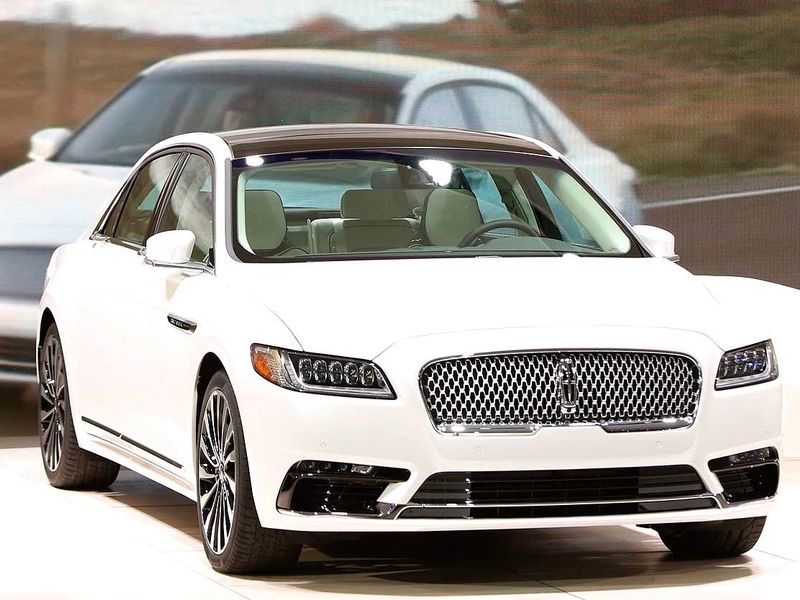
DETROIT — Lincoln Motor Co. confirmed Wednesday it will end production of the Continental at the end of 2020 as the luxury brand abandons sedans.
U.S. sales of the Continental, reintroduced in 2016, slowed in recent years as customers shifted to the brand’s growing crossover lineup. Lincoln announced this year that it would end production of its other sedan, the MKZ, at the end of the year.
“Lincoln is investing in growth segments and the brand will feature a full portfolio of SUVs, including a fully electric vehicle in the future,” the brand said in a statement. “Lincoln will continue to keep its newest SUVs fresh and we will have more news to share later this year; however, as the full-size premium sedan segment continues to decline in the U.S., we plan to end production of the Lincoln Continental at the end of this year.”
Lincoln informed workers Wednesday at the Flat Rock Assembly Plant that Continental production would end.
“We build to customer demand and customer demands are changing,” John Savona, Ford vice president, North American Manufacturing, said in a letter. “Lincoln is important to Ford Motor Company and we know it has a bright future.”
Lincoln brought back the Continental in 2016 as the flagship vehicle for a rebounding brand. It was one of the first models to feature Lincoln’s new mesh grille and was the first product to include 30-way massaging seats, which have become popular options on more recent models.
Sales hit 12,012 in 2017 but fell steadily from there. Officials attempted to juice sales with a hyper-limited run of coach-door models in 2019.
A spokeswoman said the brand would offer a 2021 Continental in China.
Origins
The Continental is among Ford’s most revered nameplates. It joined Lincoln’s lineup in 1939, when it was developed as a one-off vehicle for then-Ford President Edsel Ford, who had fallen in love with the long hoods, short trunks and rear-mounted spare tires of European sports cars on a recent trip overseas.
In 1951, the Museum of Modern Art called it one of the eight most important cars before World War II. Architect Frank Lloyd Wright considered the original Continental “the most beautiful car in the world.”
It gained cachet through the 1950s and ’60s as it was used in movies and boasted celebrity drivers such as Clark Gable, Rita Hayworth and Mickey Rooney. It also served as the limousine of U.S. presidents, notably carrying John F. Kennedy the day he was assassinated.
In total, nine generations of Continentals were produced before the nameplate was shelved in 2002.
Resurrection
Designers were thrilled when Ford officials informed them they’d resurrect the vehicle for the 2017 model year.
Originally, they were told only that they were supposed to create a “large Lincoln.” When no standout designs emerged, the automaker’s leadership team told them they’d be crafting the next Continental.
“You could almost see an immediate change in the room,” then-Lincoln President Kumar Galhotra told Automotive News. “Right there was a very important lesson in the emotion behind the name.”
While the 10th generation vehicle failed to gain traction in a utility-heavy market, Lincoln’s dealer council as recently as February was lobbying the brand to remain in the sedan segment.
“You only have to look at Tesla,” Tom Lynch, chairman of the Lincoln National Dealer Council, told Automotive News. “If you have a strong product, people are going to want it, and they’re going to want to buy it. What that looks like for Lincoln going forward, I’m not sure of.”